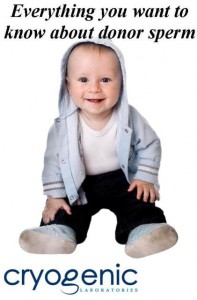The following background information on sperm banking was prepared by and agreed upon by the leading companies in the industry. Its purpose is to provide basic information about some of the key elements of a sperm bank’s operations and influence, and to further understanding by providing accurate and consistent information.
Statistics: The popular press often cites the number of anonymous donor inseminated births per year at 30,000. Although no industry-wide statistics are maintained, an unpublished survey conducted by the AATB suggests that a more accurate figure would be 4,000 to 5,000 donor inseminated births per year. (This is calculated based on 1.5 vials per insemination, a 10% pregnancy rate per cycle, and a 20% spontaneous miscarriage rate.) By extrapolating this annual figure, the total number of anonymous donor inseminated births is estimated to be less than 130,000 over the last 30 years.
Limitations on Donor Distribution: All surveyed sperm banks use some type of standard to limit the number of births attributable to any one donor. Some use the actual number of births while others use the number of family units. CLI’s policy is as follows: CLI limits the total number of births for any donor based on the application of several criteria. Specifically, a donor’s sales will cease when either of the following criteria is reached: (1) Maximum of 25-30 family units (children from the same donor living in one home) reported within the U.S.; OR (2) Total number of units sold reaches our designated limit (actual numbers are not disclosed). In addition, we also monitor the reported location of births and limit the geographic distribution of a donor consistent with the guideline of the American Society of Reproductive Medicine (ASRM). Notwithstanding the standard used to limit the number of births per donor, sperm banks do not limit the number of births within a family unit, thereby permitting full siblings via donor insemination.



